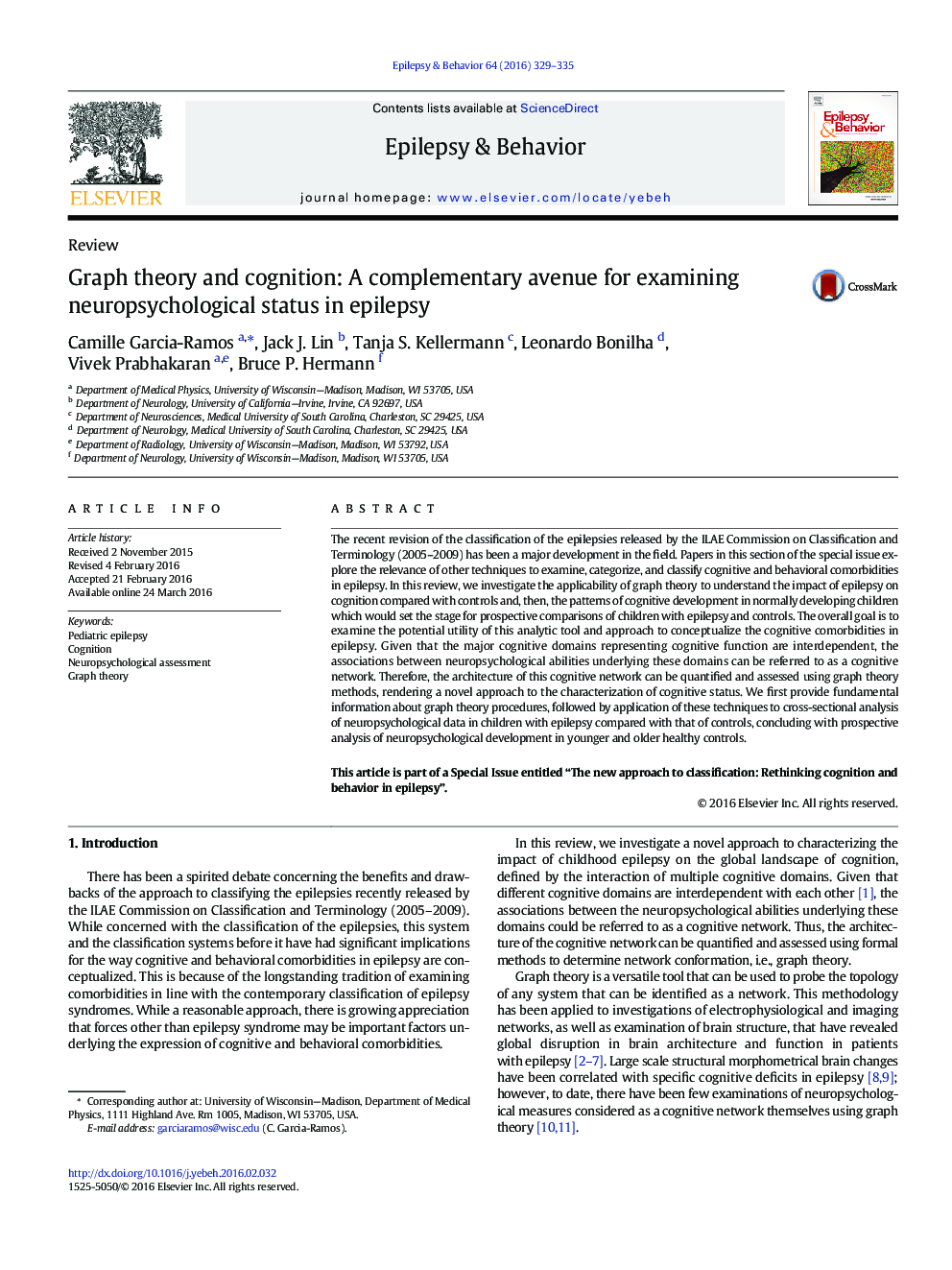| Article ID | Journal | Published Year | Pages | File Type |
|---|---|---|---|---|
| 5628386 | Epilepsy & Behavior | 2016 | 7 Pages |
â¢Human cognition is composed of several interdependent cognitive domains.â¢Associations of underlying neuropsychological abilities can be considered a cognitive network.â¢Cognitive status based on domain interactions can be assessed using graph theory.â¢Controls demonstrate higher cognitive modularity than children with epilepsy.â¢Orderly age-dependent development of cognitive networks in controls can be shown.
The recent revision of the classification of the epilepsies released by the ILAE Commission on Classification and Terminology (2005-2009) has been a major development in the field. Papers in this section of the special issue explore the relevance of other techniques to examine, categorize, and classify cognitive and behavioral comorbidities in epilepsy. In this review, we investigate the applicability of graph theory to understand the impact of epilepsy on cognition compared with controls and, then, the patterns of cognitive development in normally developing children which would set the stage for prospective comparisons of children with epilepsy and controls. The overall goal is to examine the potential utility of this analytic tool and approach to conceptualize the cognitive comorbidities in epilepsy. Given that the major cognitive domains representing cognitive function are interdependent, the associations between neuropsychological abilities underlying these domains can be referred to as a cognitive network. Therefore, the architecture of this cognitive network can be quantified and assessed using graph theory methods, rendering a novel approach to the characterization of cognitive status. We first provide fundamental information about graph theory procedures, followed by application of these techniques to cross-sectional analysis of neuropsychological data in children with epilepsy compared with that of controls, concluding with prospective analysis of neuropsychological development in younger and older healthy controls.This article is part of a Special Issue entitled “The new approach to classification: Rethinking cognition and behavior in epilepsy”.
